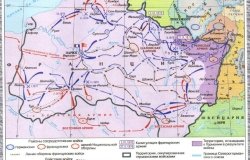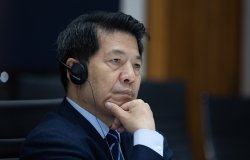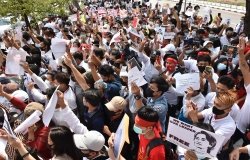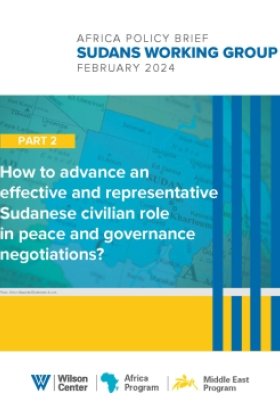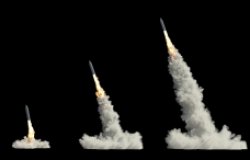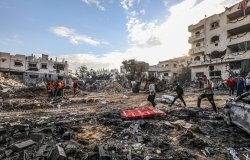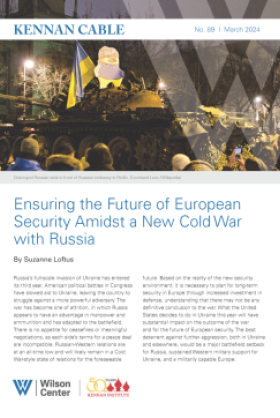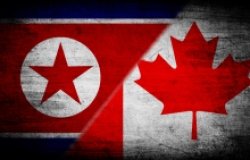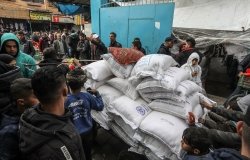Q&A: Can North Korea and the U.S. strike a nuclear deal?
After two high-profile summits between President Donald Trump and Kim Jong Un, both sides still appear to be far apart on the issue of nuclear disarmament. Have the talks reached stalemate, and what is the significance of Chinese President Xi Jinping’s recent state visit to Pyongyang? Is there still hope of a successful agreement?
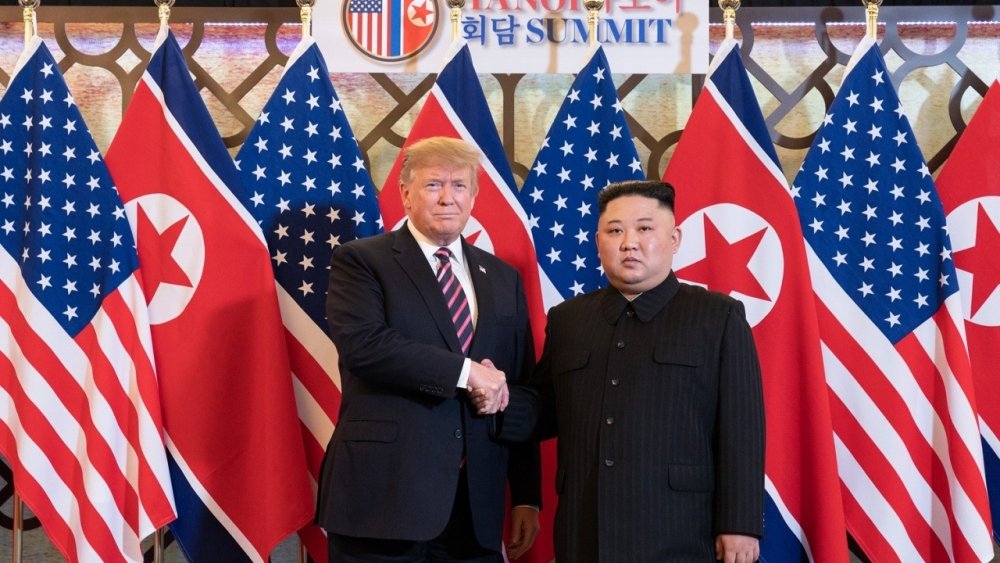
This article is part of the World Economic Forum's Geostrategy platform
After two high-profile summits between President Donald Trump and Kim Jong Un, both sides still appear to be far apart on the issue of nuclear disarmament. Have the talks reached stalemate, and what is the significance of Chinese President Xi Jinping’s recent state visit to Pyongyang? Is there still hope of a successful agreement?
To examine these questions, the World Economic Forum spoke to Jean H. Lee, Director, Hyundai Motor-Korea Foundation Center for Korean History and Public Policy at the Woodrow Wilson Center.
What will it take to re-open meaningful negotiations between the U.S. and North Korea?
Kim Jong Un did not go all the way to Hanoi, Vietnam, for a summit with President Donald Trump in February—more than 60 hours by train—to return home empty-handed. Such a high-profile trip for a leader who rarely leaves his country is carried out with careful calculation and with full intention to serve as the stage for making history.
But I believe Kim misjudged Trump’s appetite for negotiation in Hanoi. And I suspect Trump’s willingness to walk away from those talks left Kim shaken.
In the wake of that rupture, it’s no surprise that Kim retreated to rethink his strategy. I haven’t seen signs that Kim intends to completely break away from negotiations with the United States. While it may appear that talks between the United States and North Korea are at a standstill, it’s only a matter of time, and after an appropriate face-saving interval, before Kim and his envoys begin reaching out again to discuss the prospects of a third U.S.-North Korean summit.
Kim has given negotiations until the end of the year in a timeline that suggests he is both uncertain how the process will play out and anxious for a deal. We are starting to see the first indications of outreach with the latest “love letter” he reportedly sent to President Trump on the first anniversary of their June 12 Singapore Summit.
With Chinese President Xi Jinping accepting Kim’s request for a summit in Pyongyangin mid-June, and President Trump flying to Seoul later in the month for a summit with South Korea’s President Moon Jae-in, we already are starting to see movement on the long-stalled North Korea negotiations as regional leaders seek to instigate political momentum for renewed talks.
Whether North Korea and the United States have shifted strategies enough to break the impasse over denuclearization remains unclear at this juncture. Given the lack of direct communication between working-level negotiating teams, bridging that gulf will be a major hurdle if they want a third summit to be a success.
North Korea test-fired short-range ballistic missiles in early May 2019, what is the significance of this?
North Korea routinely resorts to provocation to get the world’s attention. Over the years, short-range missile tests have served as a reminder that North Korea possesses and continues to maintain a threatening missile and nuclear programme.
The recent tests conducted by North Korea served much the same purpose: to create a flurry of global headlines and to refocus attention on the Korean Peninsula.
There was broad confusion over what North Korea tested, which was by design, since any North Korean ballistic missile test is banned under UN Security Council resolutions. Kim’s goal was to remind President Trump that he is ready to return to provocation at any time — without overtly breaking a verbal promise he made to Trump in Singapore not to test long-range ballistic missiles designed to strike the United States. Short-range missile tests, which can strike targets in Japan and South Korea, also serve to make North Korea’s neighbors nervous in a bid to spur them to take action on helping to facilitate negotiations.
The launches also were designed to test President Trump’s response; would Trump revert back to his 2017 threat of “fire and fury” against North Korea or leave the door open to negotiations? The tests gave Trump the chance to let Kim know, in a very public fashion, that he remains open to negotiations with North Korea.
The leadership also uses these tests to remind the people of North Korea that they are maintaining their defensive posture in the wake of the breakdown of talks in Hanoi. North Koreans are very aware that things did not go well in Hanoi. Kim needs to assure his military, and the people, that he remains their commander-in-chief. And realistically speaking, the tests keep scores of North Korean scientists and workers employed. Kim may have promised not to test intercontinental ballistic missiles but he is continuing to maintain the programmes. And in order to be maintained and developed, the missiles need to be tested.
Are the U.S.-North Korean differences irreconcilable? Can a deal be achieved?
The beauty of American thinking is that we charge boldly into the most intractable conflicts with supreme confidence. But that confidence can also be our undoing.
President Trump claims credit for a lull in long-range ballistic missile testing by North Korea. However, it is his rhetoric that has backed us into a corner and may eventually put the United States in a position where it has no choice but to acknowledge North Korea as a nuclear weapons state — and accept that Kim Jong Un will forever hold onto his nuclear weapons.
Kim’s tactic was to use the “fire and fury”of 2017 as justification for weapons testing. The goal: to force the United States to acknowledge North Korea as a nuclear weapons state, allowing Kim to hold onto his weapons while calling for a weapons-free world, as Washington does. The strategy is to barter or sell off pieces of his nuclear programme in exchange for economic concessions, such as the lifting of sanctions.
The impasse between the United States and North Korea rests on the definition and scope of “denuclearization.” President Trump may define “denuclearization” as the unilateral dismantling of North Korea’s nuclear weapons programme. However, by calling for the “denuclearization of the Korean Peninsula,” Kim is offering to dismantle his nuclear programme only if the United States withdraws its nuclear umbrella over South Korea and offers other major economic, diplomatic and security concessions.
It is an impasse with no easy solution.
That said, you only have to travel across North Korea as I have, into the impoverished small cities and countryside where heat, electricity, food and clean water are in scarce supply, to know that Kim will come back to the negotiating table. He needs both diplomatic victories and outside economic help if he is to hold onto power for decades to come.
Sanctions, if employed strategically, can serve as a diplomatic tool. The sanctions, though devastating to the North Korean people, give the United States, and other countries, leverage in negotiations. And they hold the potential to serve as a bargaining chip in a transactional negotiation.
Whether both sides are ready and willing to engage in the tough negotiations that lie ahead remains to be seen.
On the United States’ side, it will require creative, informed thinking to come up with offers that take into consideration North Korea’s needs and concerns. On the North Korean side, it will require Kim Jong Un himself to make the bold decision to embrace a transformational change in his country’s relationship with the United States, and to empower his diplomats to work with their American counterparts to negotiate on his behalf.
The risks are high for both sides. For Kim, his hold on power and his nation’s very existence are at stake. For the United States, regional and perhaps even global security are at stake, and that is no small consequence when it comes to nuclear proliferation. U.S. nuclear negotiations with North Korea carry implications far beyond the Korean Peninsula.
But the rewards will be high if they can come to a deal, not just in the short term for their political legacies, but for the future of the people of North Korea and South Korea.
This article originally appeared on the World Economic Forum.
Follow Jean H. Lee, director of the Hyundai Motor-Korea Foundation Center for Korean History and Public Policy, on Twitter and Instagram @newsjean. Follow the @Korea_Center on Twitter.
About the Author

Jean H. Lee
Journalist and former Pyongyang Bureau Chief, Associated Press

Hyundai Motor-Korea Foundation Center for Korean History and Public Policy
The Center for Korean History and Public Policy was established in 2015 with the generous support of the Hyundai Motor Company and the Korea Foundation to provide a coherent, long-term platform for improving historical understanding of Korea and informing the public policy debate on the Korean peninsula in the United States and beyond. Read more

Indo-Pacific Program
The Indo-Pacific Program promotes policy debate and intellectual discussions on US interests in the Asia-Pacific as well as political, economic, security, and social issues relating to the world’s most populous and economically dynamic region. Read more
